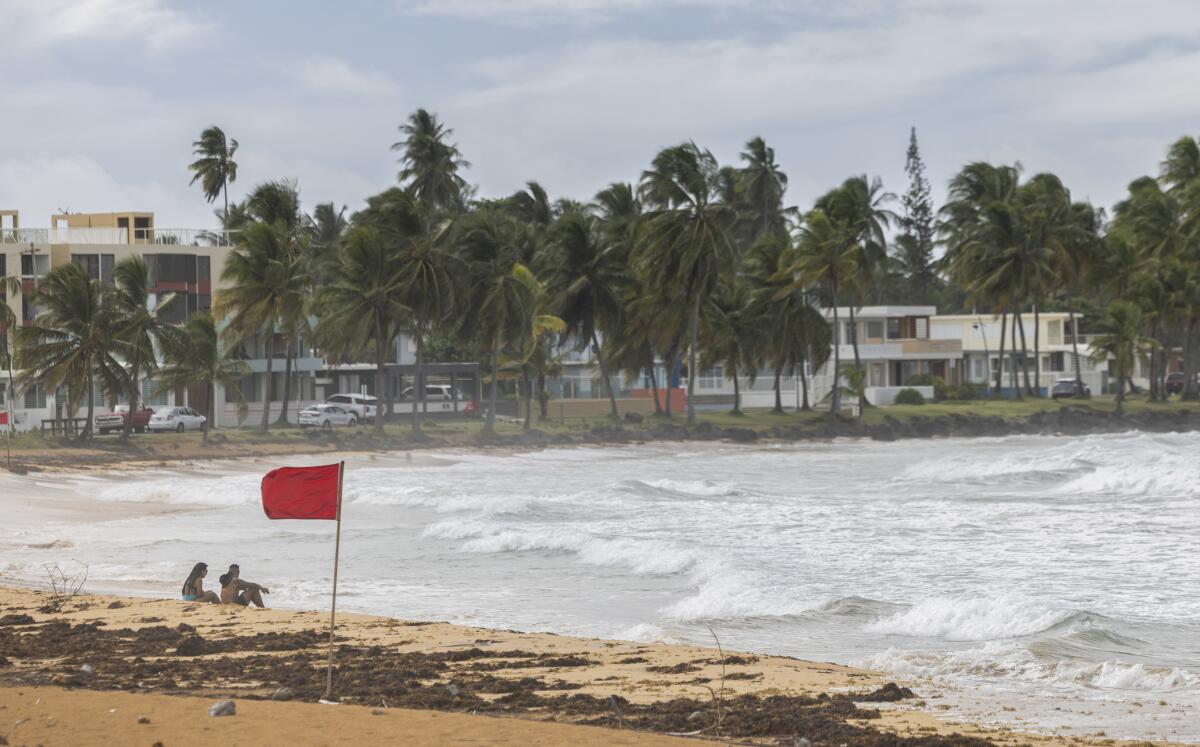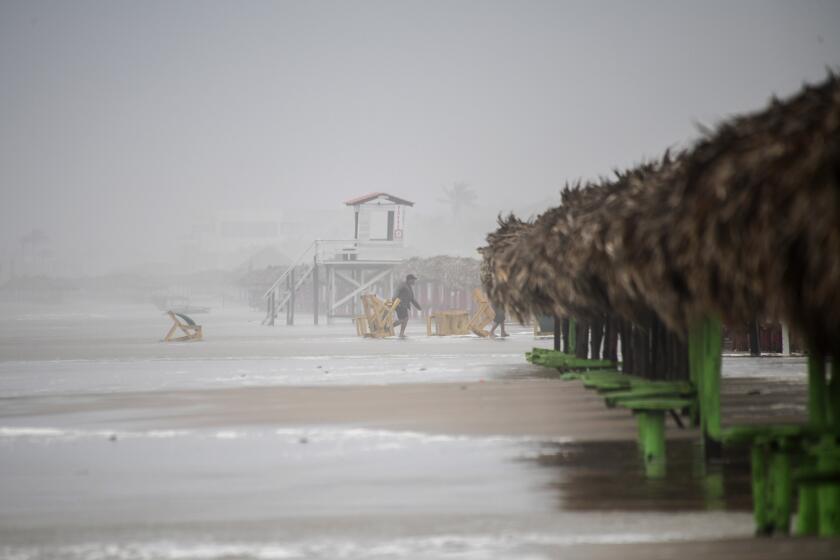Hurricane Ernesto pummels northeast Caribbean, leaving hundreds of thousands in the dark

TOA BAJA, Puerto Rico — Ernesto strengthened into a hurricane Wednesday as it unleashed torrential rain on Puerto Rico and left half of all customers in the U.S. territory without power.
The storm was about 225 miles northwest of San Juan, Puerto Rico, and was moving over open waters. It had maximum sustained winds of 75 mph and was moving northwest at 16 mph.
Tropical storm warnings were discontinued for Puerto Rico and its outlying islands of Culebra and Vieques, as well as for the U.S. and British Virgin Islands.
“I know it was a long night listening to that wind howl,” U.S. Virgin Islands Gov. Albert Bryan Jr. said in a news conference.
An islandwide blackout was reported in St. Croix, and at least six cellphone towers were knocked offline across the U.S. territory, said Daryl Jaschen, emergency management director.
Schools and government agencies remained closed in the U.S. and British Virgin Islands and Puerto Rico, where heavy flooding was reported in several areas, forcing officials to block roads, some of which were strewn with trees. More than 140 flights were canceled to and from Puerto Rico.
“A lot of rain, a lot of rain,” Culebra Mayor Edilberto Romero said in a phone interview. “We have trees that have fallen on public roads. There are some roofs that are blown off.”
Debby, Oscar, Tony: What’s in a storm’s name? How does a tropical storm or hurricane get its moniker? Will yours come up on the forecasters’ list?
Flash flood warnings remained Wednesday afternoon.
In the north coastal town of Toa Baja, which is prone to flooding, dozens of residents moved their cars to higher areas.
“Everyone is worried,” said Víctor Báez as he sipped beer with friends and watched the rain fall. He only briefly celebrated that he had power. “It’s going to go out again.”
Ernesto is forecast to move through open water for the rest of the week; it is expected to become a major Category 3 storm then weaken slightly to a Category 2 as it nears Bermuda on Saturday.
“Residents need to prepare now before conditions worsen,” said National Security Minister Michael Weeks. “Now is not the time for complacency.”
As Ernesto barrels toward Bermuda, forecasters warned of heavy swells along the U.S. East Coast.
“That means that anybody who goes to the beach, even if the weather is beautiful and nice, it could be dangerous … with those rip currents,” said Robbie Berg, warning coordination meteorologist with the National Hurricane Center.
Between 4 and 6 inches of rain is expected in the U.S. and British Virgin Islands and 6 to 8 inches in Puerto Rico, with up to 10 inches in isolated areas.
More than 720,000 customers were without power in Puerto Rico, along with 23 hospitals running on generators, Gov. Pedro Pierluisi said Wednesday. He added that crews are assessing damage and that it was too early to tell when electricity would be restored.
“We are trying to get the system up and running as soon as we can,” said Juan Saca, president of Luma Energy, the company responsible for transmission and distribution of power in Puerto Rico.
Luma Energy said earlier Wednesday that its priority was to restore power to hospitals, the island’s water and sewer company and other essential services. About 235,000 customers were without water as a result of power outages, Pierluisi said.
Puerto Rico’s power grid was razed by Hurricane Maria in September 2017 as a Category 4 storm, and it remains frail as crews continue to rebuild the system.
Not everyone can afford generators on the island of 3.2 million people with a more than 40% poverty rate.
“People already prepared themselves with candles,” said Lucía Rodríguez, a 31-year-old street vendor.
Pierluisi has said that President Biden has approved his request for Federal Emergency Management Agency funds.
Ernesto is the fifth named storm of this year’s Atlantic hurricane season. Since 1966, only four other years have had three or more hurricanes in the Atlantic by mid-August, according to Philip Klotzbach, Colorado State University hurricane researcher.
The National Oceanic and Atmospheric Administration has predicted an above-average Atlantic hurricane season this year because of record warm ocean temperatures. It forecast 17 to 25 named storms, with four to seven major hurricanes of Category 3 or higher.
Coto writes for the Associated Press. AP journalist Julie Walker in New York contributed to this report.
More to Read
Sign up for Essential California
The most important California stories and recommendations in your inbox every morning.
You may occasionally receive promotional content from the Los Angeles Times.










